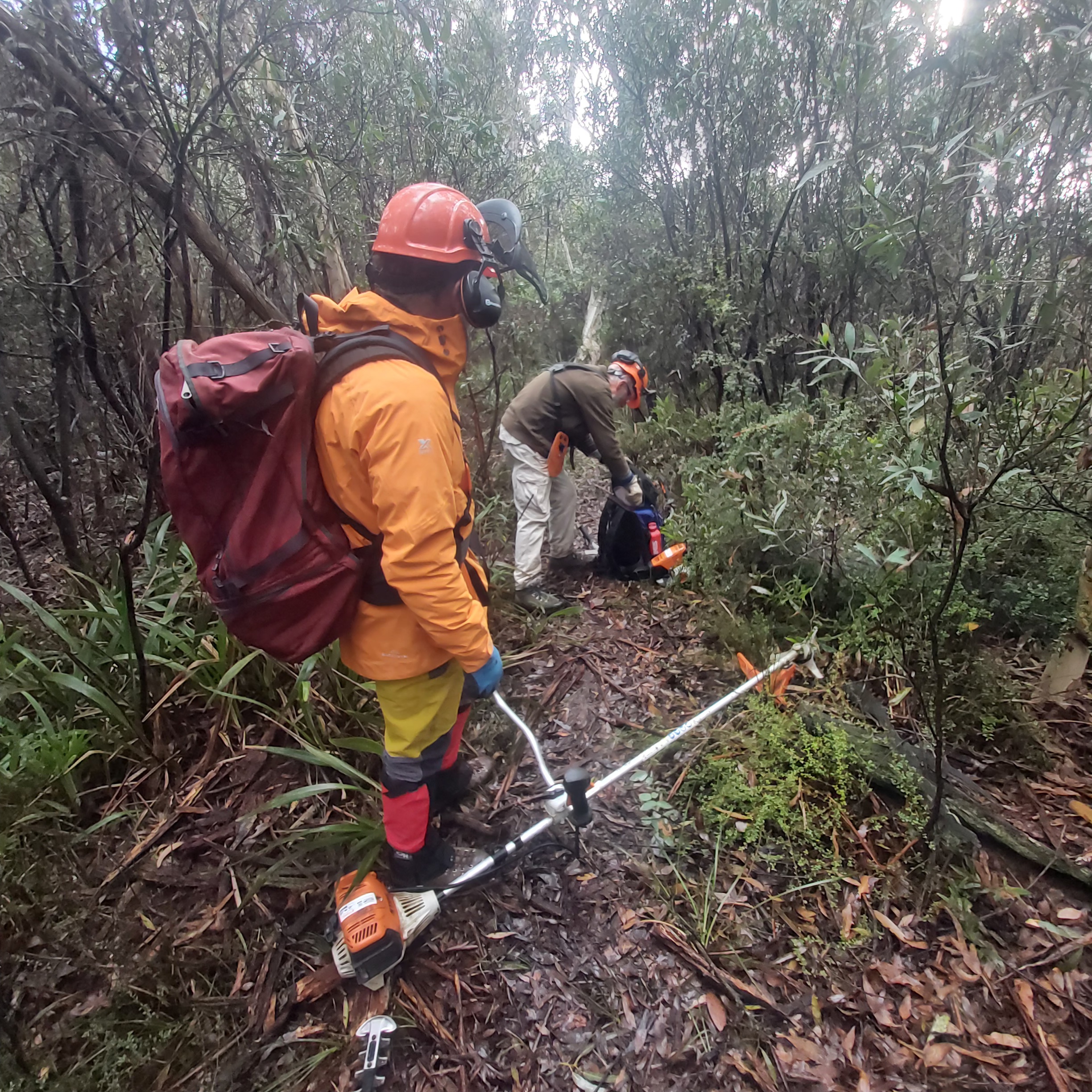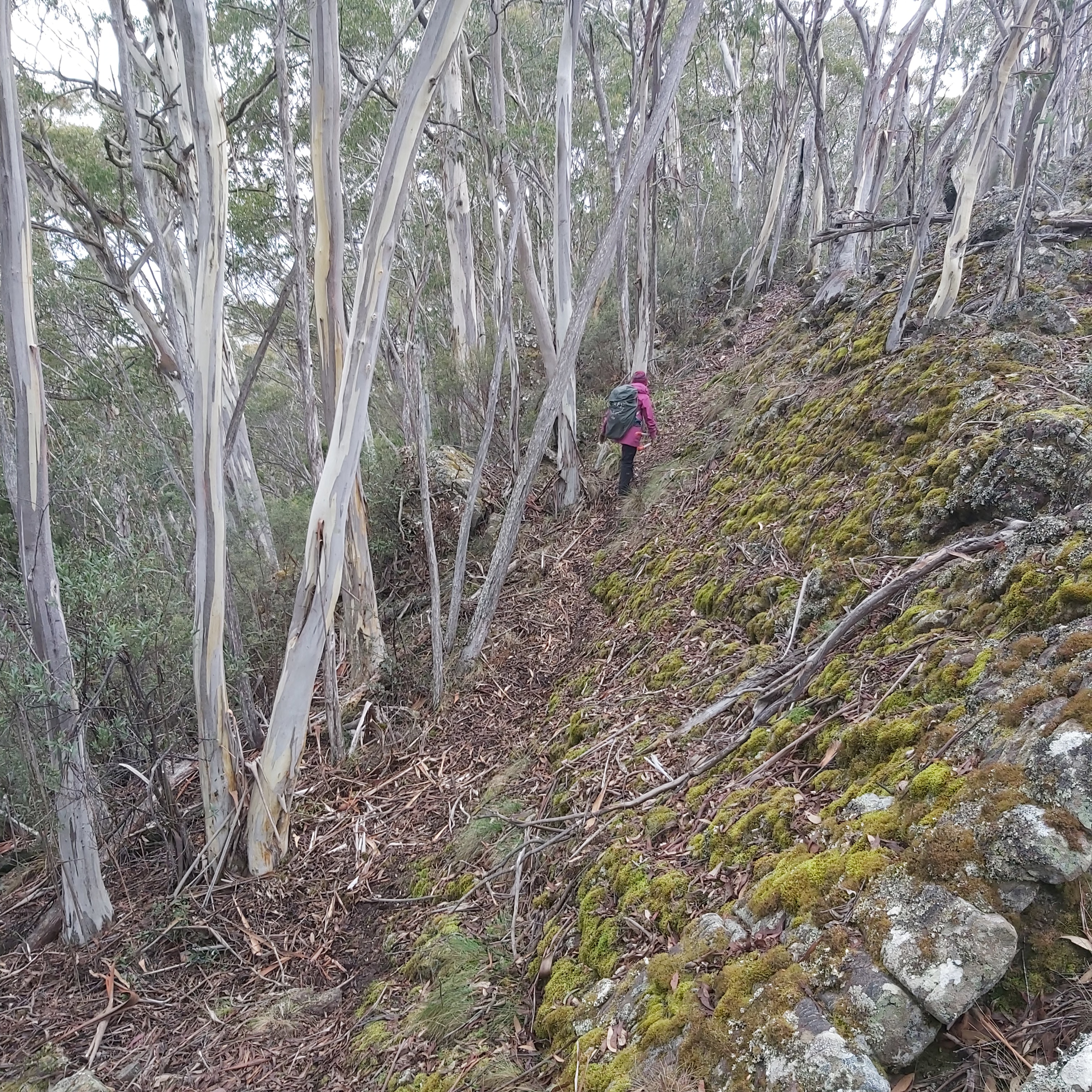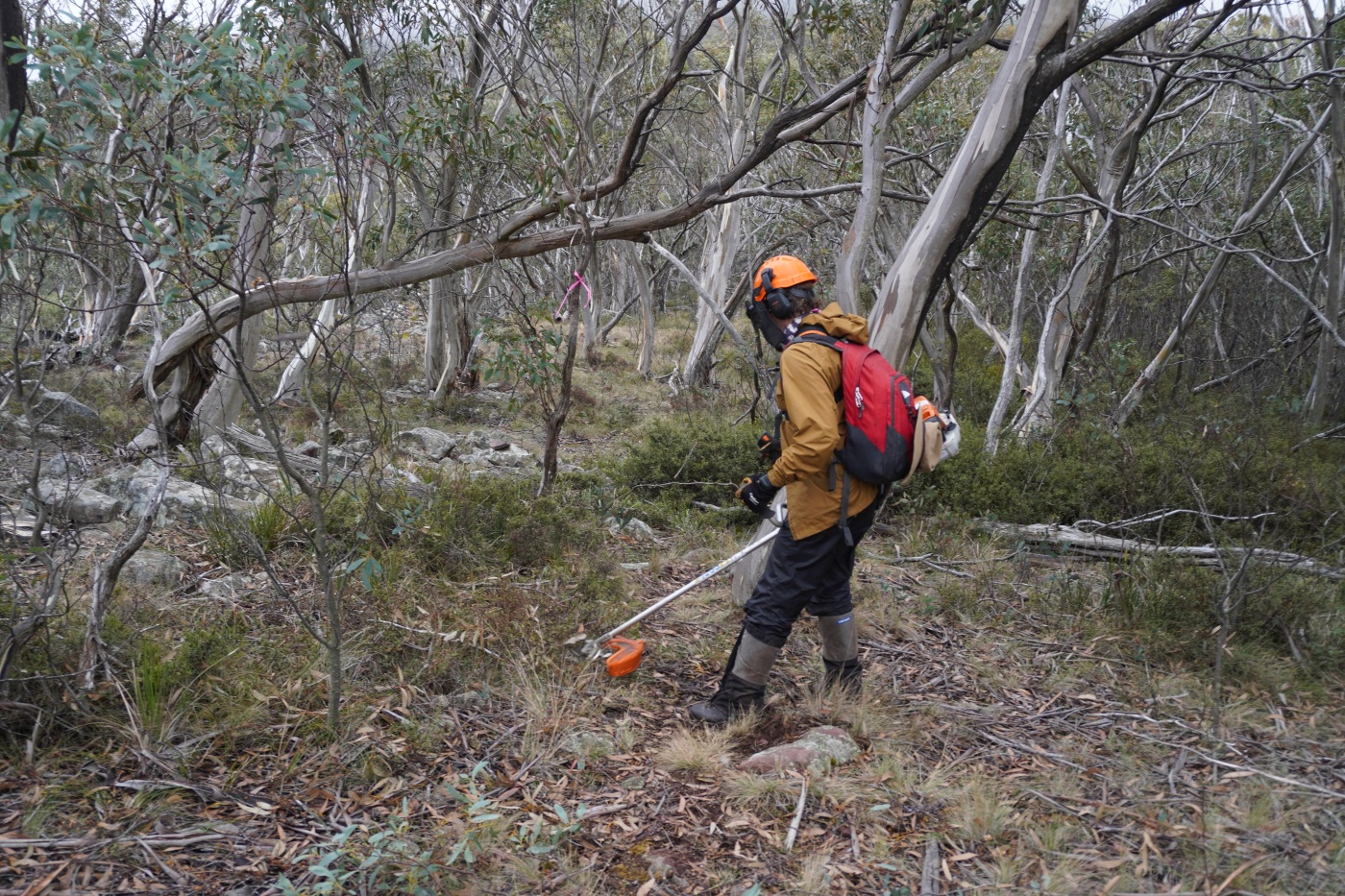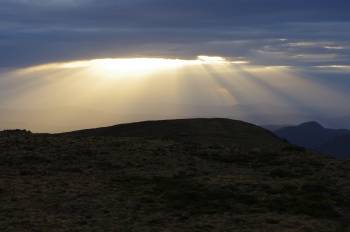If you have ever wandered on a walking track in the mountains, you have enjoyed the fruits of someone else’s labour. Walking tracks are cultural artifacts that allow us to access the forests, mountains and rivers that we love. Often they follow earlier paths: settlers followed First Nations routes out of Gippsland into the high country. Miners and graziers cut rough tracks into the gold diggings. Sometimes these turned into commerce highways as large population centres grew around the diggings. Nowadays the foot tracks in the high country are all about recreation.
But with increasing fires across the mountains, many tracks can become crowded out through a mass of regrowth. And as trees killed in bushfires start to collapse, many tracks become crossed by fallen logs and the tracks become multiple braids, often ending in dead ends, making navigation difficult and increasing the likelihood of walkers becoming lost. Land management authorities have limited funds to maintain the trail network and have many demands on their time.
While contractors are often used to build or maintain tracks, there is also an essential role being played by volunteer groups. One of the key groups is BTAC – Bushwalking Tracks and Conservation – which operates as part of Bushwalking Victoria. As they note on their website, ‘BTAC Volunteers carry out hands-on work on tracks and conservation projects. Our projects are carried out under the auspices of relevant land managers, by Parks Victoria (in Victorian national and state parks) and the Department of Energy, Environment and Climate Action (in Victorian state forests).’ It is a very active group of volunteers who assist government agencies in maintaining walking tracks. In particular, BTAC has a real interest in the high country including the Australian Alps Walking Track (AAWT). They run regular events where they focus on opening up a particular section of track that is becoming overgrown and sometimes maintenance to mountain huts.

After watching this group’s good work for a couple of years I finally got around to joining one of their activities. This one was to remove vegetation along a section of the AAWT between Low Saddle and Mt MacDonald, which has experienced a lot of tree fall and thick regrowth, especially in the lower sections of the track.
There is a lot of preparation behind these work trips. Liaison with the relevant land manager (often Parks Victoria) will determine what sections of a particular track needs work. In many instances, someone will need to scout the proposed area of work to determine what tools and how many people will be needed to clear up that section in the allocated time.

On the activity itself, someone will need to go ahead and mark the track with flagging in the sections where it has started to veer away from the original position. Where trees or vegetation have obscured or blocked a track, multiple braiding can occur and the BTAC work intends to recreate a single route through these areas.
On the Mt MacDonald trip we had five crews working: initially the flagging/track alignment team, followed by a chainsaw crew who cleared the many fallen logs across the tracks. Then the heavy duty brush cutter crew, who clear thick vegetation on the track. Then a crew with hedge trimmers, who clear the obstructions on each side and above the track. And finally the cleanup crew, who remove cut vegetation and place it along side or off the track. Usually one of the crew will use a large lopper to remove any tripping hazards that might exist.

The section we worked on was mostly through remarkable snow gum forests that thinned out as we climbed higher. As a number of participants noted, it is hugely satisfying work because the outcomes are so tangible: what had been an overgrown and hard to follow track is now open for easier walking and is far easier to follow. I have recently heard from a number of AAWT walkers of getting offtrack in this section, with time consuming detours as they attempted to locate the actual track, which largely follows the rocky ridgeline to the summit.
BTAC works in collaboration with the relevant land managers. On this trip we received great support from two of the Mansfield Parks Victoria rangers (who also provided a meal on Saturday night as a thank you for our work). There was a great sense of camaraderie among the 16 people who attended the trip, many of whom were long time volunteers with BTAC (and a considerable number who have walked the AAWT in the past). The worktrip was professionally managed by Bob Edwards and Joe Van Beek.

If you enjoy a bit of good hard work in a glorious environment and want to help Give Back and look after our public lands, then consider applying to join a BTAC activity. You do this through registering on the Parks Victoria volunteer portal. Check the BTAC website for further information and details on upcoming work trips.


























































Leave a comment